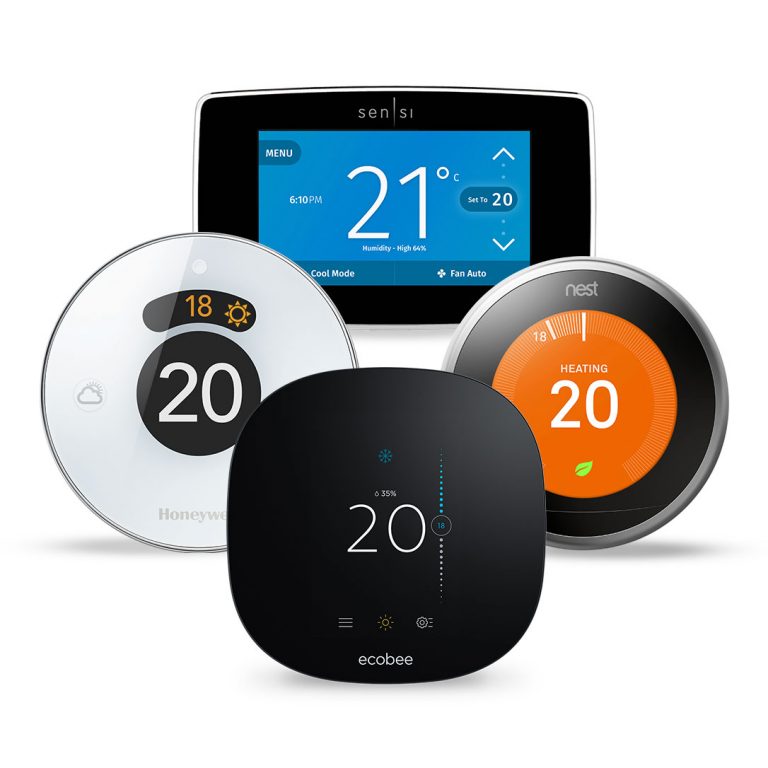Nowadays, companies such as Google and Amazon focus more and more on increasing the customers’ ease of life with the use of smart home assistants, such as Google Home and Amazon Echo. But, before the introduction of these smart devices, there was already another smart instrument in some people’s living room: the smart thermostat. The first smart thermostat that was able to learn from your behavior, surroundings and preferences was the Nest Learning Thermostat that was introduced in 2011 (Nest, 2011). This device could program a heating and cooling timetable itself, based on your personal schedule. Furthermore, it could detect whether you are at home, and if not, it would automatically switch off the heating. A few years later, the smart thermostats still have largely the same functionalities, but are optimized because of machine learning on data of users (Nest, 2017).
The most important claim made by producers of smart thermostats is that they save energy and thus will help you save money. However, is this claim true? Producers of smart thermostats have done some research themselves. Nest (acquired by Google in 2014) produced a white paper in which they state that the device can save you up to 29% of your heating costs in the Netherlands (Nest, 2014). Ecobee found that customers in the US saved on average 23% on their heating and cooling bill (Ecobee, 2013). However, research by independent parties are less positive. In August 2016, Florida Solar Energy Center conducted a research with smart thermostats and found that heating and cooling costs would decrease on average with 9.5%. However, in some of the participating houses cooling costs increased after installation of the smart thermometer (Florida Solar Energy Center, 2016). Kassa, a Dutch consumer television program focused on reviewing and testing consumer products, also tested different smart thermostats. They even concluded that the thermostats would not save you any money at all (Kassa, 2014).
There are three reasons why smart thermostats do not deliver what they promise. First of all, producers often calculate cost savings compared to people who keep their thermostat at the same temperature during day and night (Kassa, 2014; Florida Solar Energy Center, 2016). Secondly, the thermostat is only able to learn properly from your schedule when you have a regular lifestyle (Consumentenbond, 2017). Lastly, the thermostat works best when the household consists of only one person (Kassa, 2014).
Based on the above, one could suggest that smart thermostats do not work and will not work in the future. Also Heisler (2016) concluded that thermostats did not increase their capabilities in the last couple of years. I, however, believe that they have a bright future in front of them. I think that smart thermostats are already useful for households who meet certain conditions. Furthermore, I believe that the thermostats will become useful for a larger group of costumers in the future, because of the Internet of Things (IoT). Thanks to IoT the thermostats will be connected with a multitude of devices, increasing the amount of information on which the device makes decisions. The recent announcement that Johnson Controls will introduce a smart thermostat which includes Microsoft’s Cortana, only strengthens me in this view.
What do you think about the future of smart thermostats? Leave a comment below!
References:
Consumentenbond. (2017). Slimme thermostaat: je centrale verwarming slim bedienen. [online] Available at: https://www.consumentenbond.nl/energie-vergelijken/slimme-thermostaat#no2 [Accessed 17 Oct. 2017].
Ecobee. (2013). Saving money with ecobee smart WiFi thermostats. [online] Available at: https://www.ecobee.com/savings/ [Accessed 17 Oct. 2017].
Fitzsimmons, M. (2017). Microsoft’s first smart thermostat is called GLAS, and it’s gorgeous. [online] TechRadar. Available at: http://www.techradar.com/news/microsofts-first-smart-thermostat-is-called-glas-and-its-gorgeous [Accessed 17 Oct. 2017].
Florida Solar Energy Center. (2016). Evaluation of the Space Heating and Cooling Energy Savings of Smart Thermostats in a Hot-Humid Climate using Long-term Data. [online] Available at: http://www.fsec.ucf.edu/en/publications/pdf/fsec-rr-647-16.pdf [Accessed 17 Oct. 2017].
Heisler, Y. (2016). Google’s Nest acquisition was more disastrous than we thought. [online] BGR. Available at: http://bgr.com/2016/06/06/googles-nest-acquisition-was-more-disastrous-than-we-thought/ [Accessed 17 Oct. 2017].
Kassa. (2014). Slimme thermostaat bespaart geen energie. [online] Available at: https://kassa.bnnvara.nl/nieuws/slimme-thermostaat-bespaart-geen-energie [Accessed 17 Oct. 2017].
Nest. (2011). Nest Labs Introduces World’s First Learning Thermostat. [online] Available at: https://nest.com/press/nest-labs-introduces-worlds-first-learning-thermostat/ [Accessed 17 Oct. 2017].
Nest. (2014). Nest Learning Thermostat Efficiency Simulation for the Netherlands. [online] Available at: http://downloads.nest.com/press/documents/efficiency-simulation-white-paper-nl.pdf [Accessed 17 Oct. 2017].
Nest. (2017). Hoe bespaart de 3e generatie Nest Learning Thermostat energie?. [online] Available at: https://nest.com/nl/support/article/eu-savings [Accessed 17 Oct. 2017].


